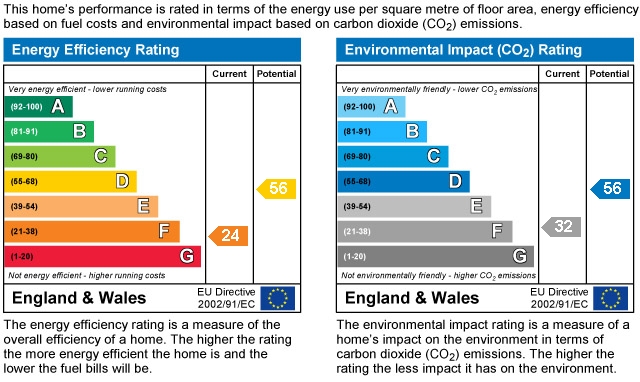
Updated 11 July 2011

|
Updated 11 July 2011 |
|
HOME PAGES GLOBAL WARMING WHAT YOU CAN DO GREEN ISSUES BACKGROUND THE INITIATIVE |
This page provides an introduction to energy assessment. It introduces the current requirements for energy assessment, and outlines the three kinds of assessment used in England:
It then discusses the energy assessors who provide these assessments. Some relevant references are given. Introduction to Energy Assessment The European Union's Energy Performance of Buildings Directive 2002/91/EC, inspired by the Kyoto Protocol, was published in January 2003 and aimed at cutting back on energy consumption and ecological deterioration due to CO2 emissions. It should have been transposed into law by each EU member state with effect from 4 January 2006. It can be summarised as seven different but interrelated requirements:
There is a European Union requirement that all buildings should have Energy Performance Certificates (EPCs) by January 2009 . EPCs summarise energy performance in 7 grades - from A (best) to G. In England and Wales the directive as it applies to domestic housing was implemented in Part 5 of the Housing Act 2004. supported by new requirements in the Building Regulations 2005 which came into force in April 2006, and assessment methods published by the Building Research Establishment (BRE). Scotland and Northern Ireland have similar requirements. An example of an energy performance certificate 
Requirements for Energy Assessment On sale or letting a property The Housing Act 2004 introduced a new method of house sale in England and Wales. This requires the supply of a home information pack(HIP) by the seller. HIPs were initially intended to simplify the sale process by including a building survey, but the government backed down from this and much of the initial motivation was therefore lost. However the home information pack must include a home condition report that contains an energy performance certificate. The intention is to make energy performance a factor in the valuation of housing. The introduction of HIPs was delayed because of a shortage of trained energy assessors. However it was then introduced in stages and now applies to all dwellings. An energy performance certificate must also be supplied when a property is offered for let and when a lease is renewed. On new buildings and alterations Building regulations for new developments must now include a calculated energy assessment report for the development. Building regulations are being used to increase the energy efficiency of new construction. The change in part L of the building regulations in 2002 required an increase in energy efficiency of 20%. The version of building regulations part L introduced in April 2006 required another 20% improvement in energy efficiency. This process is likely to continue as the government seeks to make all new housing from 2016 carbon neutral. Assessment Procedures The standard assessment procedure The Standard Assessment Procedure(SAP) is the government's recommended system for energy rating of new self-contained dwellings. The main calculation uses details of the construction and the materials used. It generates two main estimates.
Changes introduced in 2005 to this measure included:
The reduced data standard assessment procedure (RDSAP) RDSAP is defined in an appendix to the SAP 2005 document. It is a method of generating SAP ratings fairly rapidly for existing buildings where the assessor does not have access to the construction details. The assessor collects readily observable data about the building, for example room height and floor area, and other factors which indicate the likely design, for example the building's age. This data is then expanded to produce an assumed building construction. The SAP rating is calculated for this assumed building, using the same process as is used for new buildings where the actual construction is known. The simplified building energy model (SBEM) SBEM provides an analysis of the energy consumption of buildings other than dwellings. It is intended for the smaller public and commercial premises. Dynamic simulation modelling is used to estimate the energy performance of larger buildings taking account of air conditioning daily variations and heat flows within the building. It is typically used to improve the expected energy performance of the building before it is built.
|
 |
If you have any comments or queries about this website please contact the
webmaster. |
© Blewbury Energy Initiative 2014 |